Program Manager vs Project Manager: The Roles Explained

In lean organizations, the line between a program manager and a project manager is often blurry.
 Unclear project and program manager roles (Source: Reddit)
Unclear project and program manager roles (Source: Reddit)You're likely doing the job of both roles, which is excellent for learning. But what about organizational impact? Are you helping the team grow or achieve its goals?
Case in point: The National Audit Office found, in its Progress Report, that unclear leadership in the Universal Credit Program tanked morale, crippled risk management, and led to unrecoverable losses. The impact? A 6-month delay and £2.3 billion wiped from its value.
Bottom line: Knowing your role, whether as a program or project manager, is key to avoiding overlapping workstreams, guiding your team, and growing your career. This article will help.
Program management vs project management: What's the difference?
While both sound similar, they differ significantly in definition and practice.
What is program management and project management?
Program management explained
Program management means coordinating multiple related projects, such as launching a suite of customer-facing apps, to achieve a larger strategic goal.
It focuses on long-term outcomes like:
- Increasing market share
- Driving digital transformation
- Repositioning a brand across different markets
Hence, program managers oversee complex, interconnected workstreams across multiple teams and departments. This ensures the program stays aligned with business objectives.
Curious what the responsibilities of program and project managers really entail? We'll cover each in detail in the next section.
Project management explained
By contrast, project management is about delivering a specific product, service, or result, such as rolling out a new inventory management system.
It focuses on achieving defined objectives like:
- Launching a website
- Delivering a marketing campaign
- Building a new feature within a set timeline and budget
As a result, project managers oversee tightly scoped workstreams within a single team or department, ensuring team members complete every task according to plan.
Overall, both roles matter. However, they tackle different problems, bringing us to the real question: what's the difference between a program manager and a project manager?
Program manager vs. Project manager: A detailed comparison
As mentioned earlier, the roles of program managers and project managers differ significantly in scope, strategic influence, and execution. The table below offers a comparative overview to clarify these distinctions.
| Aspect | Program Manager | Project Manager |
|---|---|---|
| Scope | Oversees multiple related projects | Delivers a specific project |
| Focus | Long-term outcomes aligned with strategic goals | Clearly defined goal within scope, time, and budget |
| Impact | Affects large portions of the organization; reshapes operations | Immediate and tactical |
| Responsibilities | Sets vision, allocates resources, manages risks across projects | Manages day-to-day activities to deliver the project |
| Contribution to Goals | Drives strategic initiatives, improves efficiency, supports growth and transformation | Delivers outputs that programs depend on; enables strategic execution |
| Level of Change | Macro-level (drives change) | Micro-level (ensures success) |
| Interdependence | Relies on project managers to flag issues, adjust timelines, meet quality | Relies on program managers to remove roadblocks and guide overall direction |
Program manager vs project manager: responsibilities & scope
A program manager oversees multiple related projects, focusing on long-term outcomes, coordinating cross-functional teams, and managing risks across initiatives. Their work affects large portions of the organization and can reshape business operations.
In contrast, a project manager is responsible for delivering a specific project within scope, time, and budget constraints. Their impact is more immediate and tactical, focusing on a clearly defined goal.
In summary, where program managers drive change at a macro level, project managers ensure success at a micro level.
Strategic vs. tactical: how each role supports company goals
Program managers drive strategic initiatives that create long-term value. By managing interconnected projects, they ensure different parts of the organization work toward the same goals, improving efficiency and business growth. They are key to helping organizations adapt to change, scale operations, and realize large-scale transformations.
On the other hand, project managers are critical to operational success. They deliver the products, services, and improvements that programs depend on. Without strong project management, even the best strategic plans can fail in execution.
Together, both roles help businesses stay agile, competitive, and productive.
How each role works together
Program and project managers work closely to ensure strategic alignment and flawless execution. Here's a typical working relationship between the two:
- The program manager sets the vision, allocates resources, and manages risks across all the projects.
- The project manager handles the day-to-day activities needed to deliver their projects successfully.
A program manager depends on project managers to flag issues early, adjust timelines, and meet quality standards. Likewise, project managers rely on program managers to remove roadblocks and keep business objective on track.
Communication between the two roles is crucial. When program and project managers work in sync, they help organizations achieve big-picture goals and project-level wins.
Now that we've covered the key differences, let's look at each role in detail.
What is a program manager? What do they do?
TL;DR:
| Role | Responsibilities | Example |
|---|---|---|
| Evaluate the state of the portfolio | Assess program health, align projects with strategic goals, identify risks, and allocate resources effectively. | Reviewing projects like warehouse automation and route optimization. |
| Refine the operating model | Update governance, improve workflows, and establish better communication protocols to enhance program execution. | Restructuring reporting processes in digital transformation. |
| Oversee program execution | Track high-level progress, manage interdependencies, and resolve conflicts without managing tasks directly. | Managing software upgrades and new hiring processes. |
| Engage with stakeholders | Regularly update executives and cross-functional teams on progress, challenges, and strategic shifts. | Monthly updates for healthcare system execs. |
| Review project performance | Evaluate individual project performance based on metrics like budget, milestones, and risk management. | Analyzing missed deadlines in a supply chain project and course-correcting. |
Roles and responsibilities of a program manager
A program manager's work is dynamic, strategic, and cross-functional. Here's how they drive results:
Role 1: Evaluate the state of the portfolio
One of the first responsibilities of a program manager is assessing the health of the entire program portfolio. They evaluate how projects align with strategic objectives, identify risks, and ensure resources reach where they can have the most impact.
For example, a program manager at a logistics company may review active projects like warehouse automation, route optimization, and vendor management. They can use Meegle's dashboard to group these initiatives under a single work item, "Project." This helps them identify portfolio-wide bottlenecks, and reallocate efforts to meet business goals, such as reducing delivery times, lowering operational costs, and improving customer satisfaction.
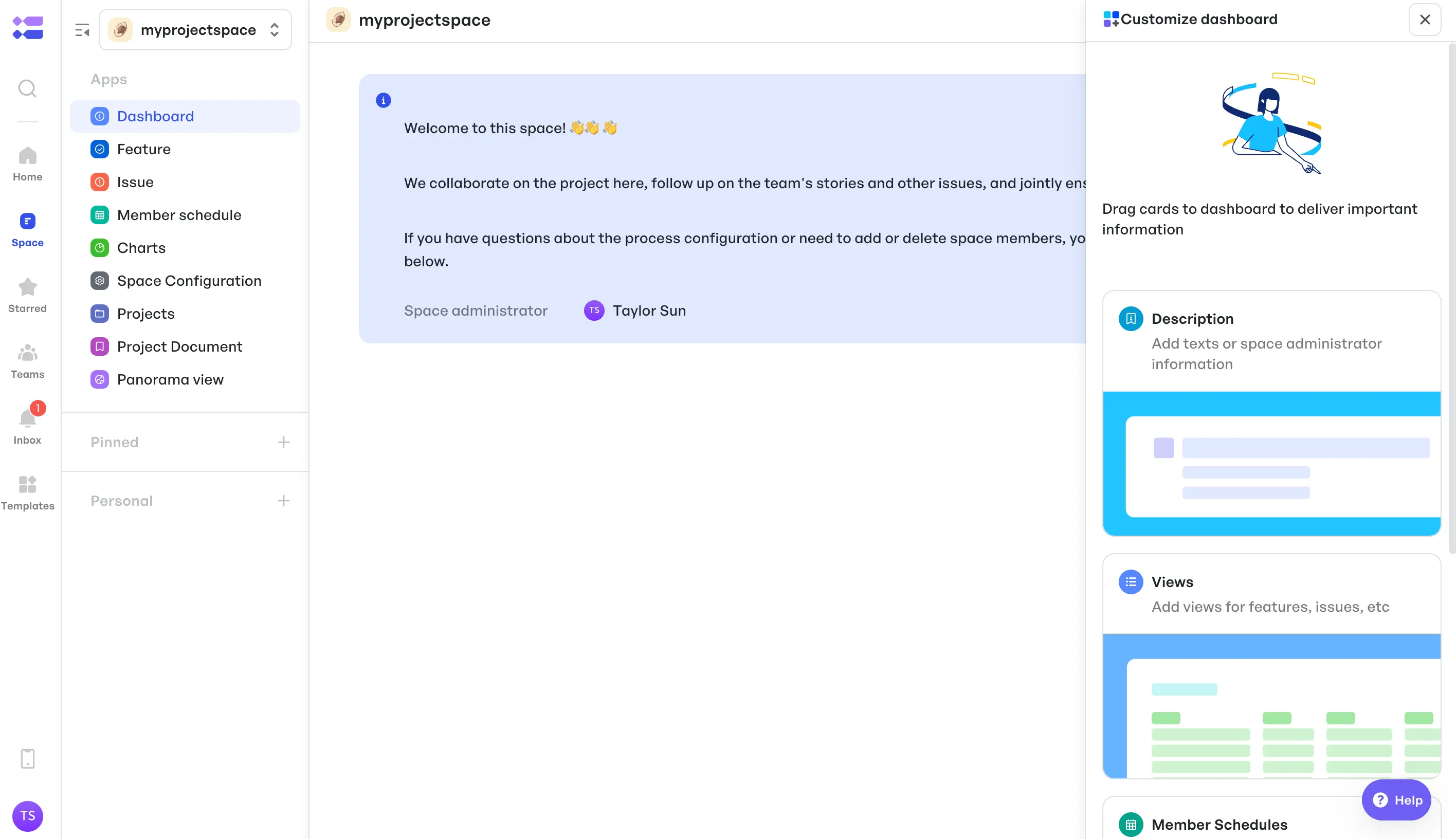 Meegle dashboard for coordinating projects
Meegle dashboard for coordinating projectsRole 2: Refine the operating model
Before refining the operating model, program managers often step in to execute immediate needs. Either way, this responsibility could mean:
- Updating governance structures
- Improving workflows
- Establishing better communication protocols between teams
For instance, a program manager leading a digital transformation might restructure weekly reporting processes across project teams to speed up decision-making.
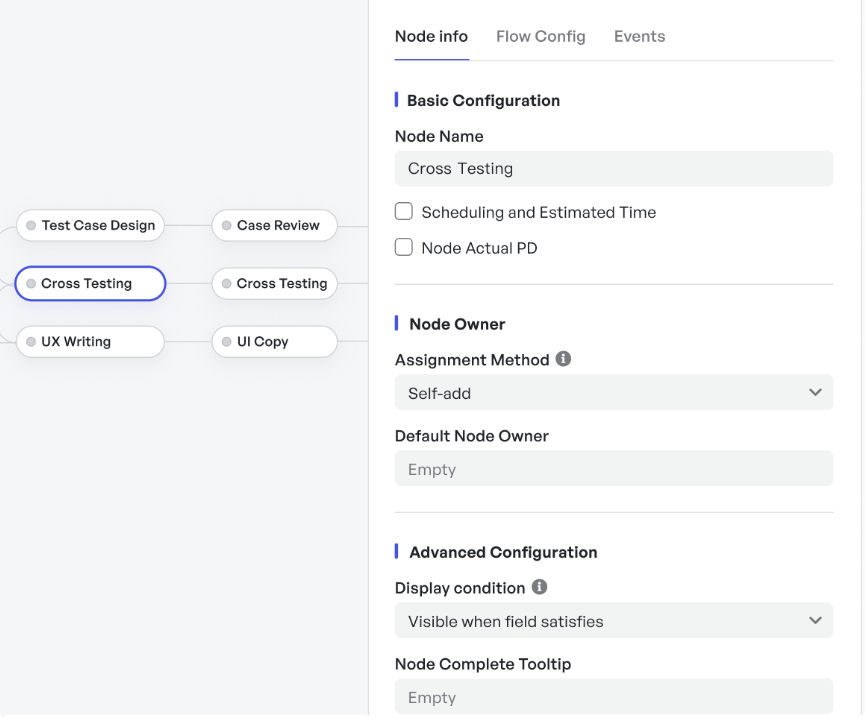 Meegle's customizable workflow
Meegle's customizable workflowThey can use Meegle's customizable workflows to set up automated task handoffs. So, when one team completes a task, the next is instantly notified and can begin work without delays. This way, stakeholders are also kept in the loop through real-time updates and notifications, for quick decision-making.
Role 3: Oversee program execution
Program managers oversee the day-to-day execution of multiple projects without getting bogged down in task-level management. They track high-level progress, manage interdependencies, and resolve conflicts between initiatives.
Imagine an operations improvement program where software upgrades and new hiring processes must happen simultaneously. To manage such complexity, Meegle's Tree View is especially useful. It helps program managers visualize large datasets along with related tasks, dependencies, teams, and timelines in a compact, organized space.
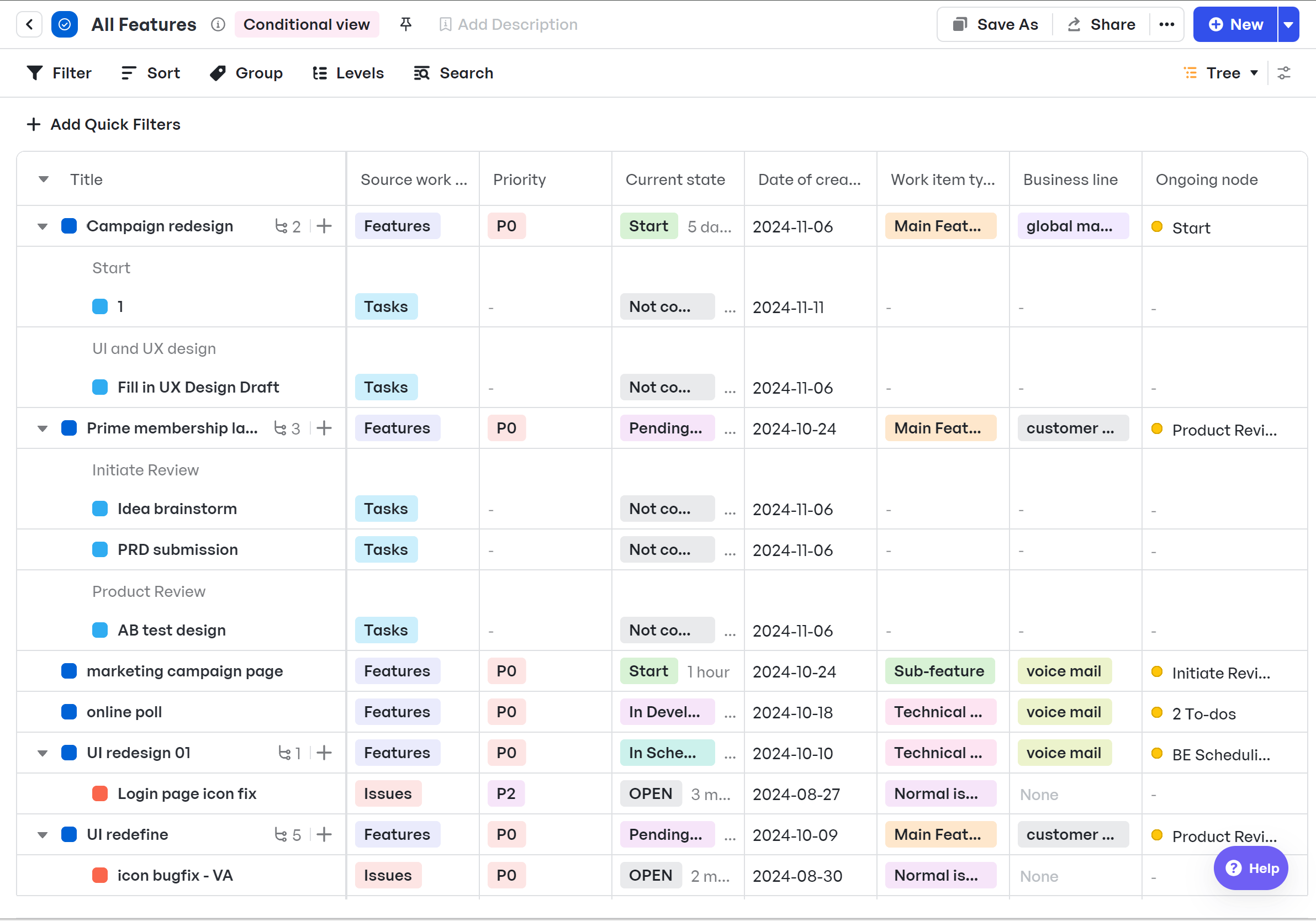 Meegle Tree view for program managers
Meegle Tree view for program managersRole 4: Engage with stakeholders
Program managers must regularly update executives, sponsors, and cross-functional teams, ensuring they stay informed about progress, challenges, and strategic shifts.
Take a healthcare system launching a modernization program, for example. The program manager might host monthly updates for department heads and executives. Or they can generate custom reports through Meegle's Charts and schedule them for automatic delivery to stakeholders each month.
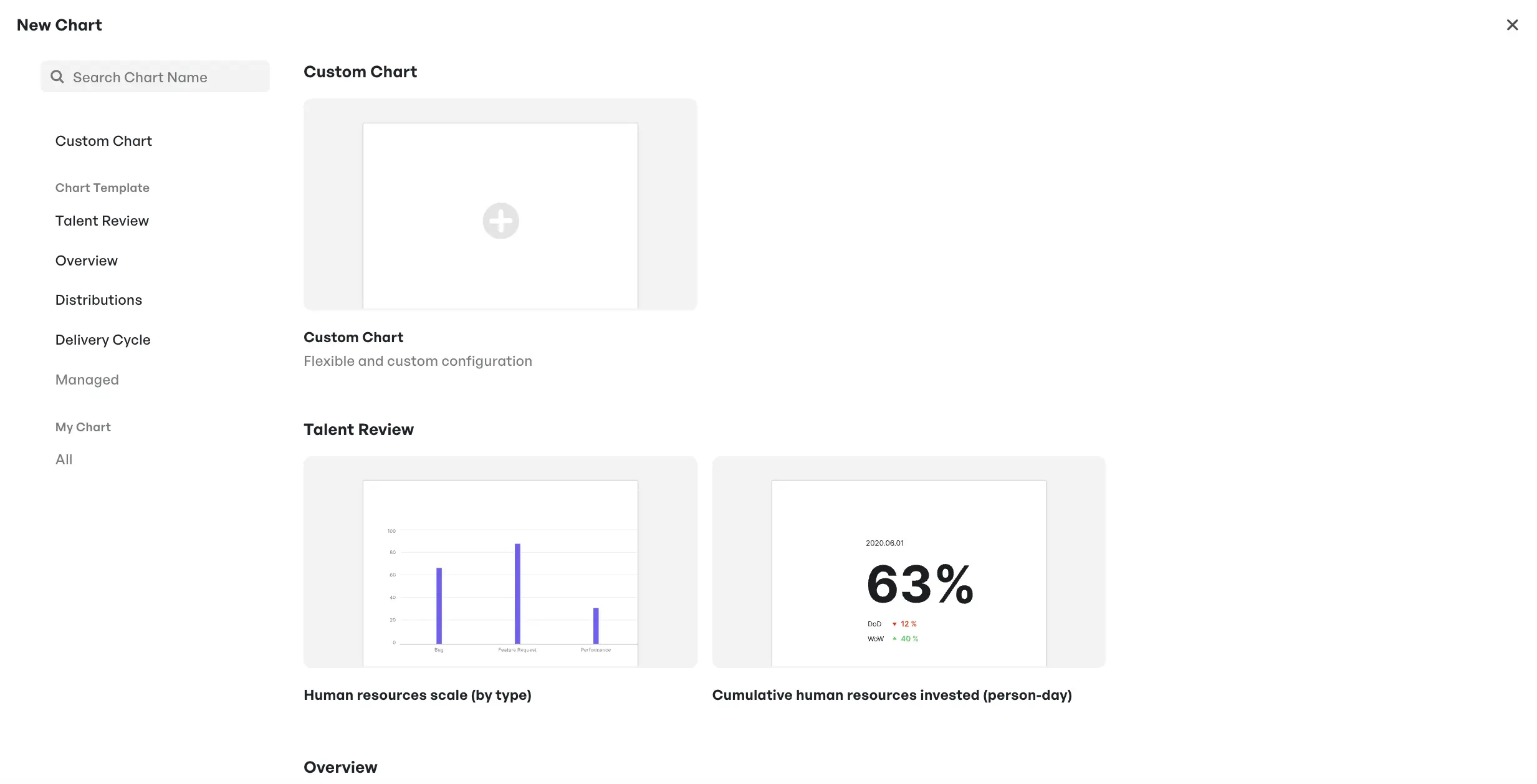 Chart options for stakeholders
Chart options for stakeholdersRole 5: Review project performance
Finally, program managers evaluate individual project performance to ensure each initiative meaningfully contributes to the program's goals. They track metrics like budget adherence, milestone completion, and risk management.
Suppose a program manager notices the supply chain project is consistently missing deadlines. Meegle's performance dashboard allows them to drill into the project's status, identify root causes, and work with the project manager to course-correct before it derails the program.
 Drill-down performance charts to review project success
Drill-down performance charts to review project successWhat is a project manager? What do they do?
A project manager delivers specific outcomes within defined scope, time, and budget constraints. They turn strategic goals into executable plans and guide the team from kickoff to delivery.
TL;DR:
| Role | What They Do | Example |
|---|---|---|
| 1. Evaluate individual projects | Define scope, objectives, success metrics, and risks to assess project viability. | Rolling out a new inventory system at a retail company. |
| 2. Manage risks | Identify potential issues early, develop contingency plans, and keep the project on track. | Anticipating vendor delays during a website launch. |
| 3. Oversee project execution | Coordinate daily work, manage scope changes, and ensure timely delivery across functions. | Leading design, development, and QA for an app redesign. |
| 4. Manage project team members | Assign tasks, align teams, and balance workloads to maintain collaboration and momentum. | Coordinating developers, IT, and stakeholders in a software rollout. |
| 5. Allocate resources | Distribute time, budget, and staff efficiently to meet goals without overextending the team. | Reassigning designers during a high-demand seasonal campaign. |
Roles and responsibilities of a project manager
Like program managers, project managers wear many hats. From planning and risk management to team leadership and resource allocation, here's what their role typically involves:
Role 1: Evaluate individual projects
A project manager's core responsibility is to assess project viability. To do that, they define the scope, objectives, and success metrics, and then identify potential risks.
For example, a project manager at a retail company leading the rollout of a new inventory system can use the Project Life Cycle template to evaluate the initiative phase by phase.
Since the template includes all five project phases by default, the manager can focus on tracking progress, assigning responsibilities, and ensuring smooth execution from vendor selection to final launch.
 Managing projects by phases
Managing projects by phasesRole 2: Manage risks
Project managers identify risks early and develop contingency plans to keep things on track. This way, teams stay agile, even when things don't go through.
A project manager overseeing a marketing project to launch a new website, might anticipate delays from a third-party vendor. They can add risks and assign owners to each risk and track the resolution status in real time in Meegle's Risk List tab (in node workflows).
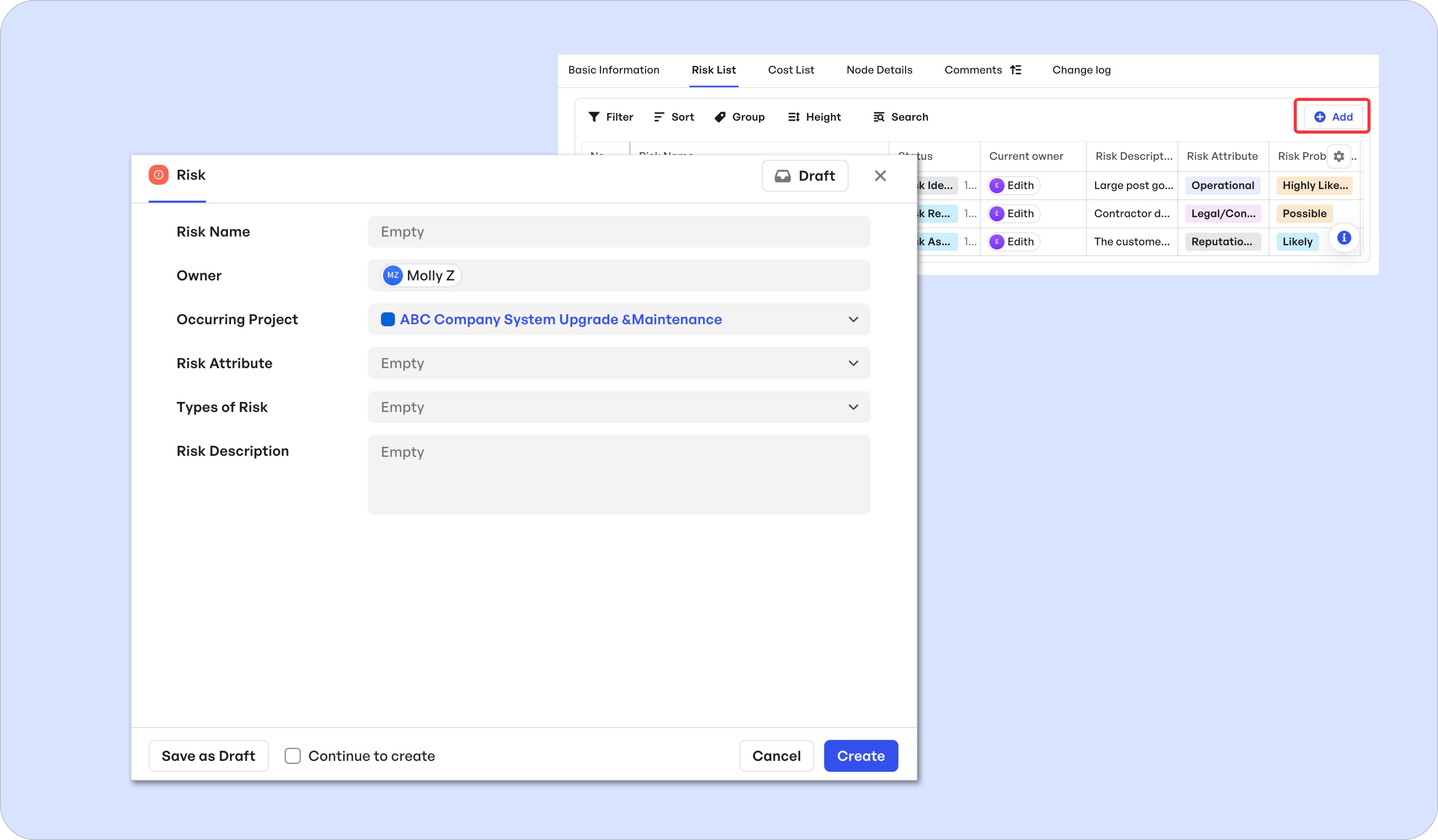 Tracking risks in Meegle
Tracking risks in MeegleRole 3: Oversee project execution
Once execution begins, the project manager leads day-to-day activities. They coordinate cross-functional work, manage scope changes, and keep the project moving forward on schedule.
Take an app redesign project, for example. The PM can use Meegle’s App Development template along with the Table view to oversee design, development, and QA.
In this centralized view, project leads can instantly see the status, owner, and priority of every feature node. This makes it easy to track progress and, when needed, quickly reprioritize tasks to focus on high-impact features.
 Overseeing project progress with Meegle
Overseeing project progress with MeegleRole 4: Manage project team members
People management is a core part of the job. Hence, project managers assign tasks, facilitate collaboration, and keep everyone aligned.
For example, a project manager supervising a software rollout involving developers, IT, and business stakeholders can use Meegle's Scheduling feature to manage team workloads. With it, they can assign clear tasks and deadlines, so every team member knows what to do and when.
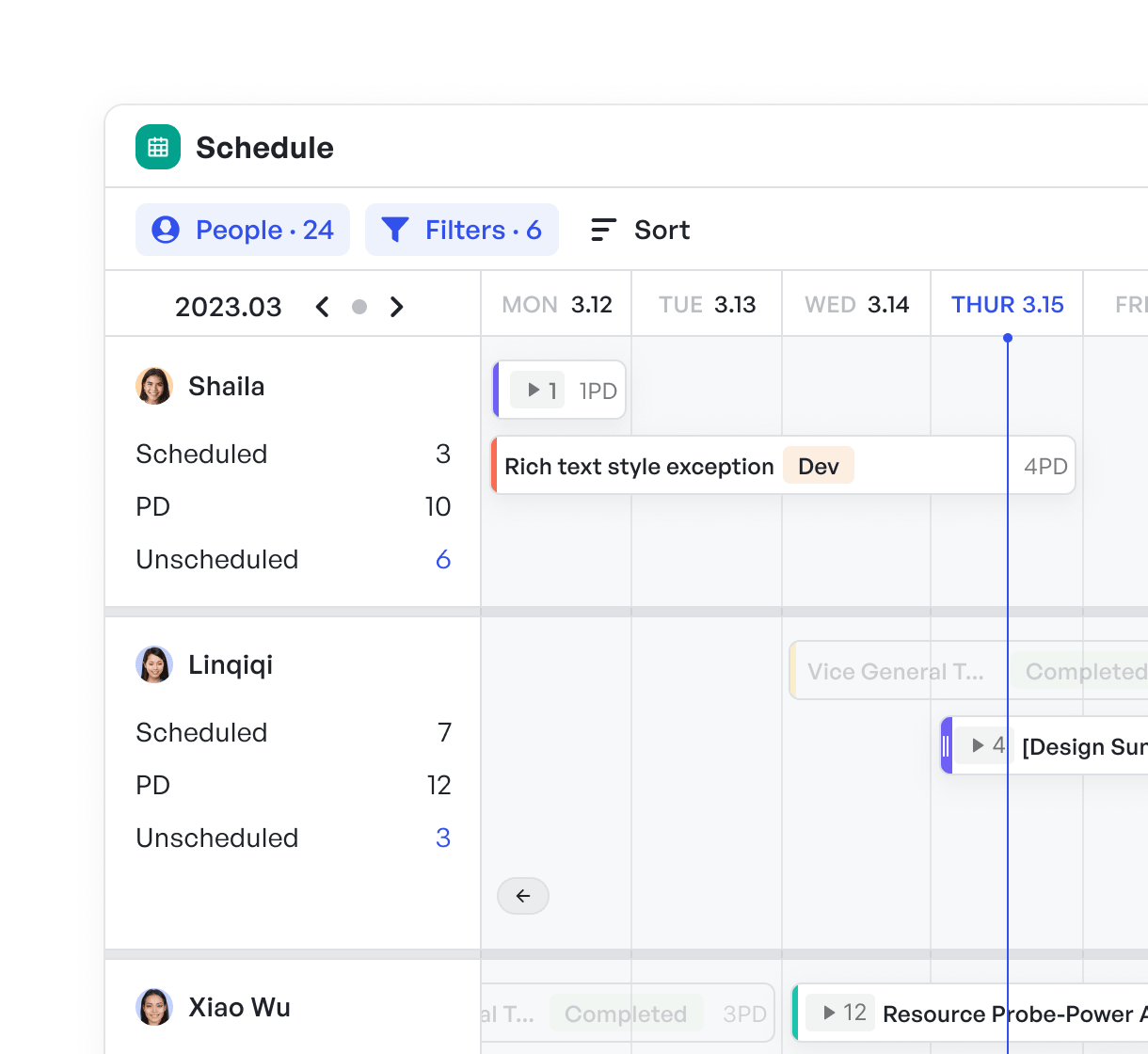 Managing workload with Meegle's Schedule
Managing workload with Meegle's ScheduleMost importantly, project managers get a consolidated view of all schedules and timelines, making it easy to spot overlaps, identify gaps, and adjust plans to keep execution on track. They can also use alerts to update team members of scope changes/progress.
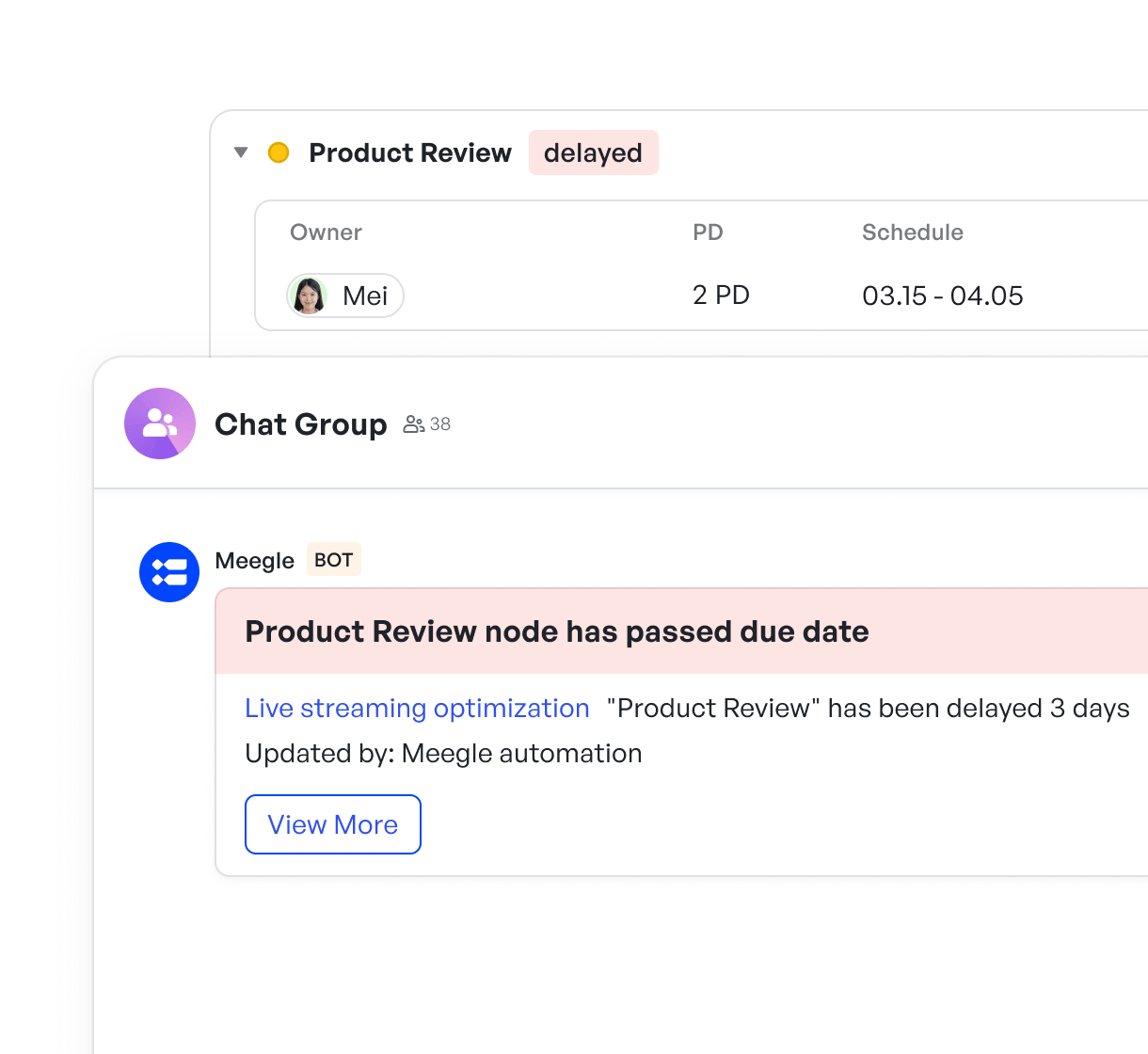 Smart deadline alerts on Meegle
Smart deadline alerts on MeegleRole 5: Allocate resources
Project managers must balance scope with limited time, people, and budget. That means making real-time decisions to deliver efficiently, without burnout or overspending.
For instance, a PM managing a seasonal campaign might see a spike in creative demands. They can use Meegle's Member Schedule to reassign designers to high-priority tasks quickly.
First, the manager uses the "All People in Schedule" view to spot who's available. Then, they redistribute work accordingly. This ensures the project stays on track without requiring extra resources.
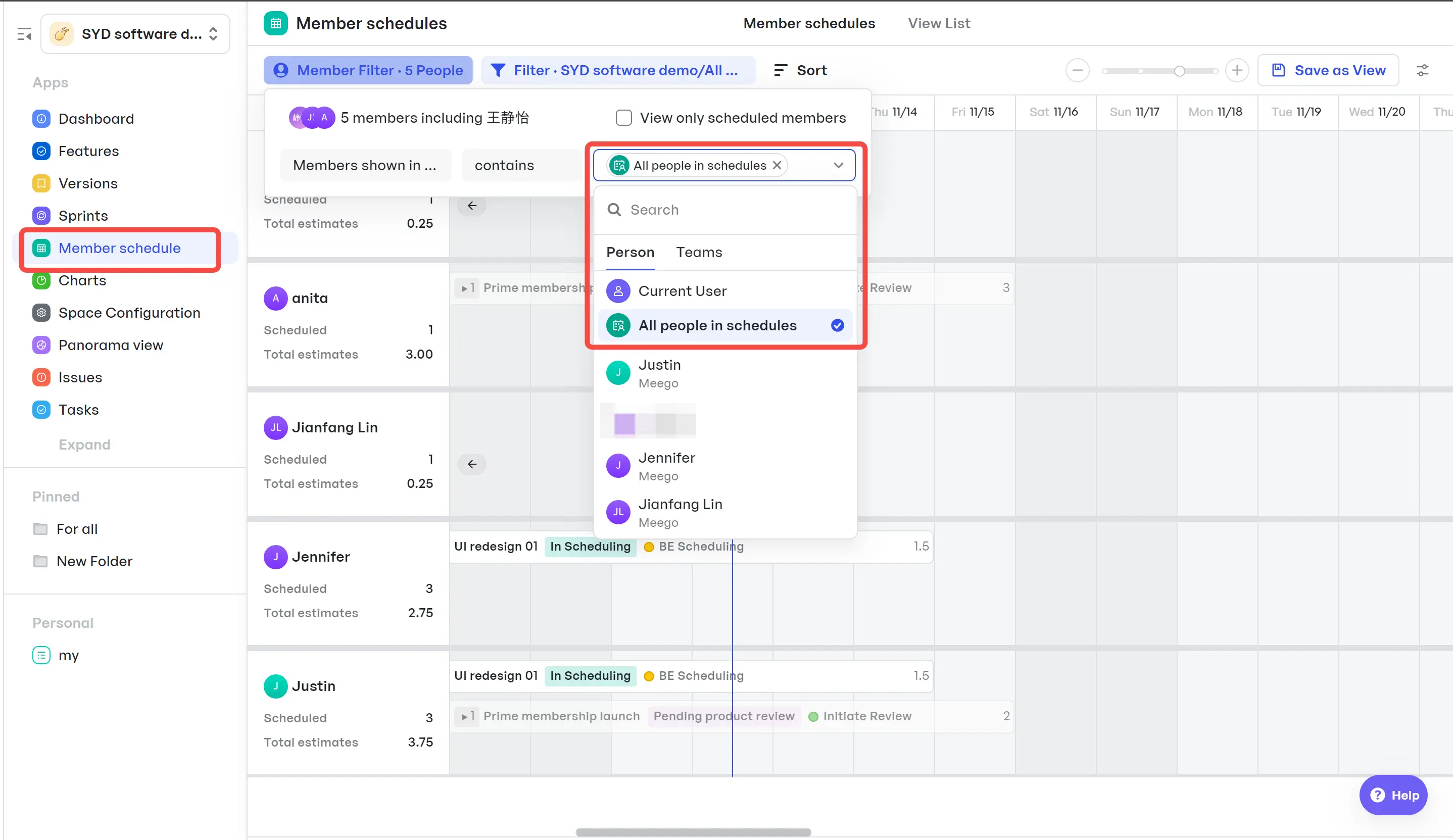 Resource management using Meegle
Resource management using MeegleFurther reading: 👉15 key project management roles and responsibilities
Why Meegle is the ideal partner for program managers and project managers
Meegle helps program and project managers stay on top of execution and strategy by offering a single platform to plan, track, and adapt programs and projects in real time. With visual, node-driven workflows and team scheduling tools, it brings clarity to complex work and keeps teams aligned from kickoff to delivery.
For project managers: clarity, control, and execution
Project managers need precision and structure, and Meegle delivers that.
- Node tasks: Each node represents a project phase, with deliverables broken down into smaller tasks. Also, every task includes estimated delivery times and schedules, eliminating ambiguity.
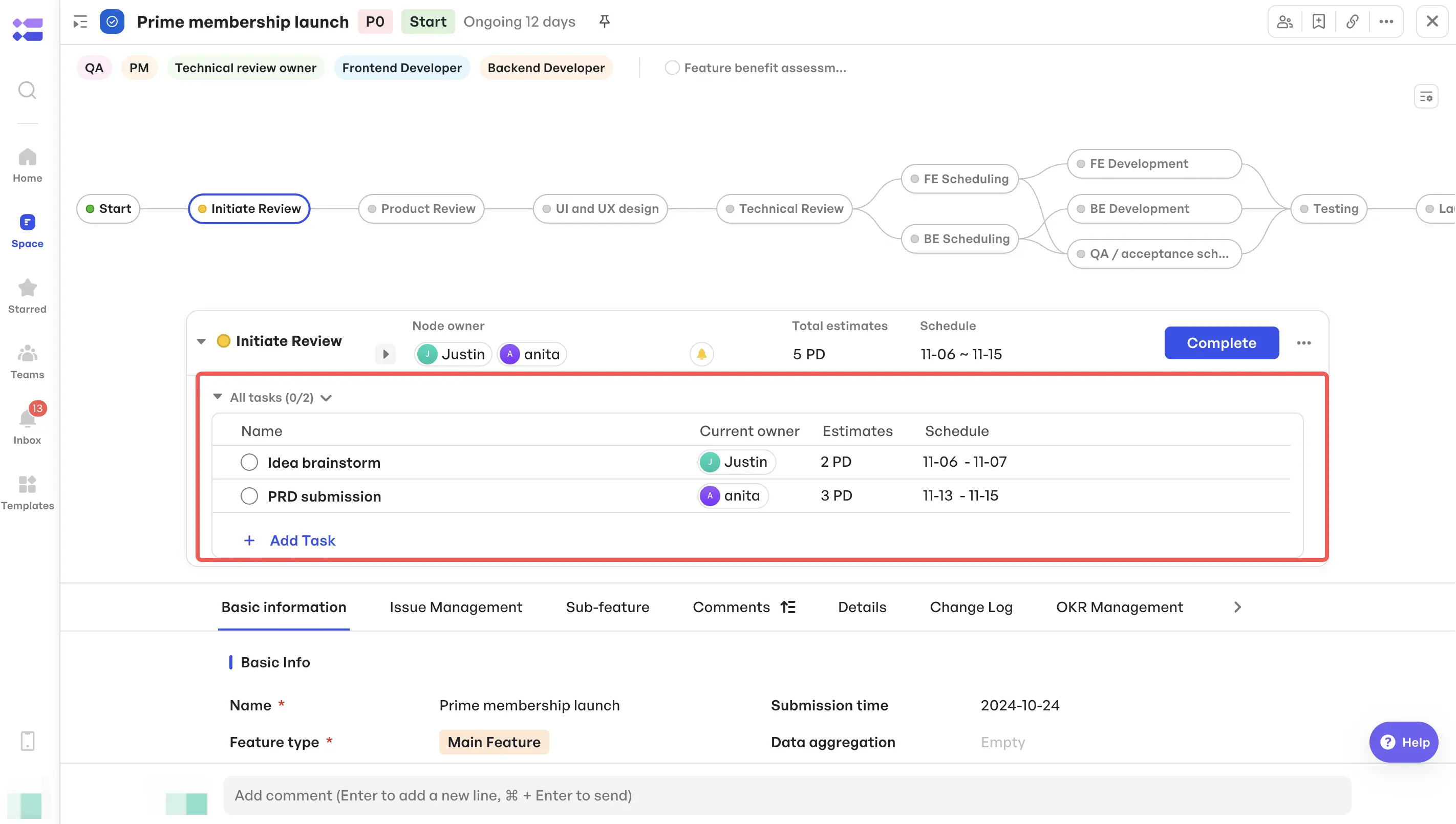 Clarity in project tasks
Clarity in project tasks- Automation: Meegle automates cross-functional handoffs. For instance, when a design node is marked complete, it can automatically trigger tasks in the engineering node—keeping momentum up and silos down.
- Views: Using Table View and Gantt View, you can track progress, dependencies, and timelines in real time. If needed, you can pivot without losing sight of priorities.
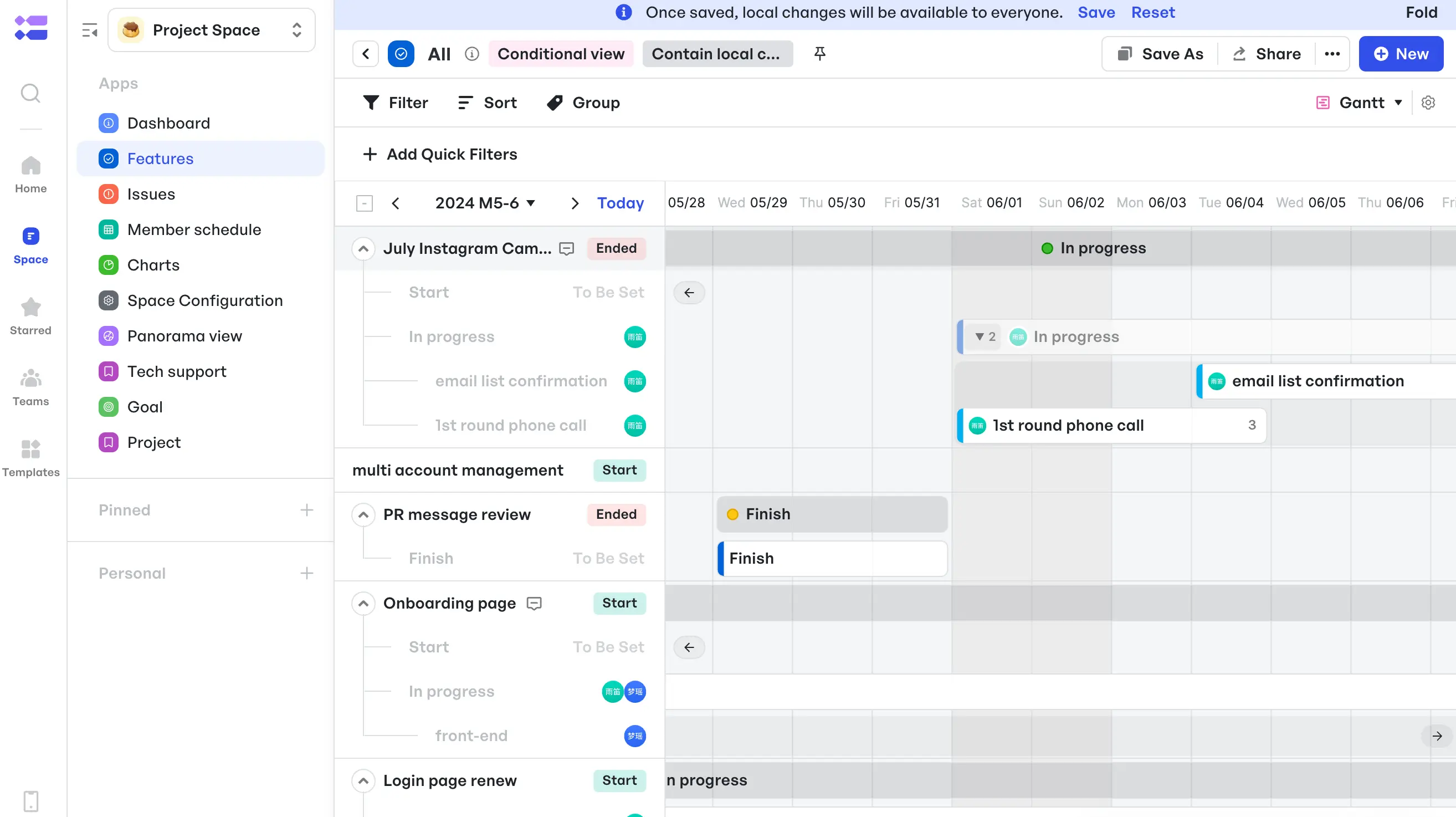 Tracking dependencies and deadlines with Gantt view
Tracking dependencies and deadlines with Gantt viewFor program managers: Strategic oversight in one place
Program managers need big-picture alignment, and Meegle makes that possible.
- Node-level visibility: Visualize how projects connect, identify collaboration hotspots, and address potential bottlenecks within Meegle's unified workflows.
- Scheduling: Meegle's scheduling tools let you manage cross-departmental capacity, balance team workloads, and forecast availability across your program
- Charts: Use visual reports to pinpoint where timelines, teams, and responsibilities intersect before risks turn into delays. For example, monitor dependencies between R&D and marketing around a shared product launch.
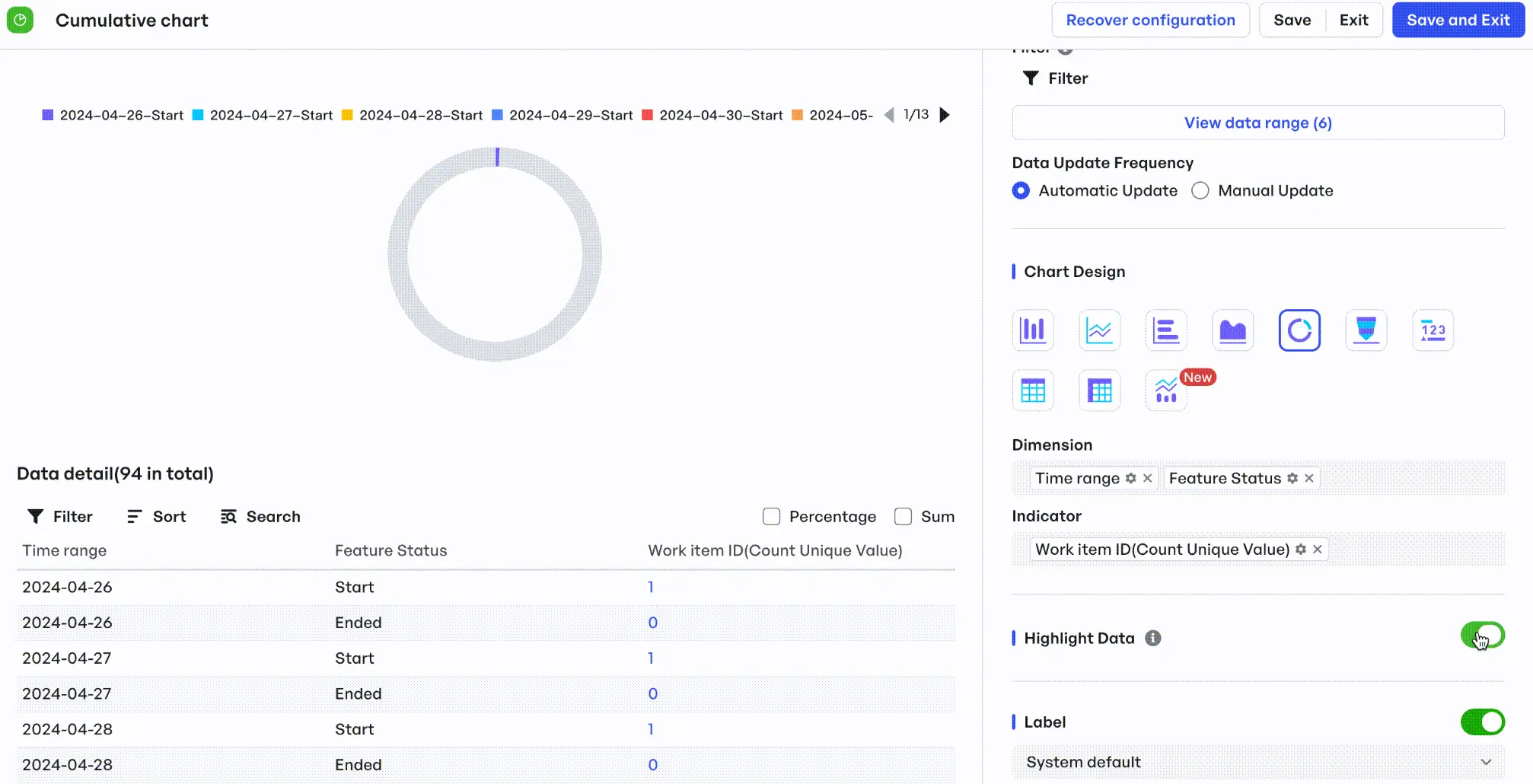 Cumulative chart for monitoring projects
Cumulative chart for monitoring projectsMeegle helps you scale how you work, whether managing a single project or a complex portfolio.
Build your workflow today!
FAQs
Is a program manager typically more senior than a project manager?
Typically, yes. Project managers focus on multiple related projects and their respective project managers, aligning them with strategic goals. However, seniority can vary by company structure.
Which pays more between project and program management?
Program managers oversee programs and so generally earn more due to broader responsibilities and strategic oversight. Compensation may vary depending on industry, experience, and region's program and project management institutes.
Can a program manager become a project manager?
Yes, though it's usually a step down in scope. A program manager can shift to a project management career to focus on execution rather than strategy.
Which is better, a PMO or a project manager?
A PMO (Project Management Office) supports multiple projects at an organizational level, while PMs lead the execution of individual projects. They serve different functions, so no one is better.
The world’s #1 visualized project management tool
Powered by the next gen visual workflow engineRead More
Check All BlogsStart creating impactful work today



